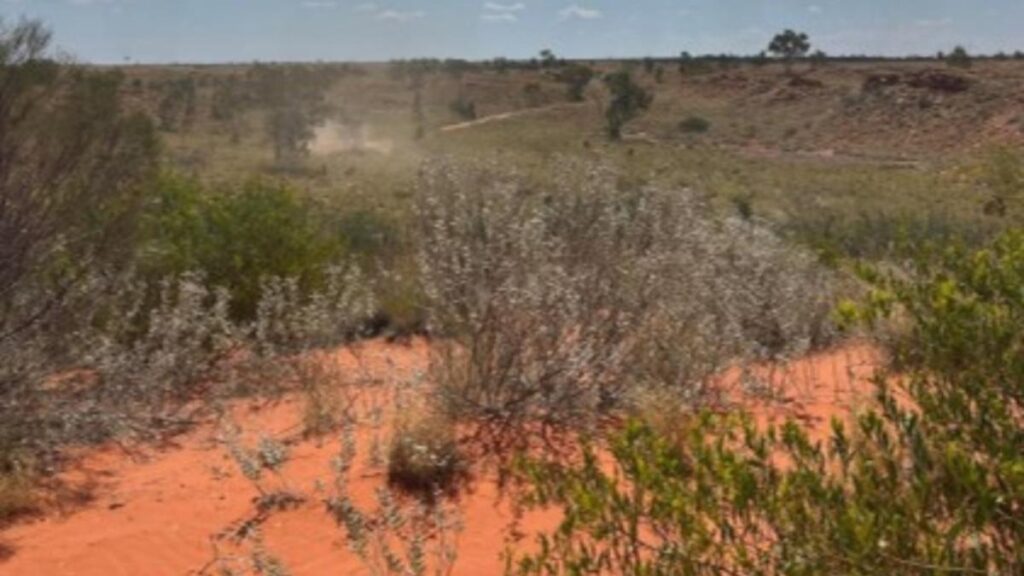Lycaon Resources has begun access-track and drill-pad earthworks for its maiden assault on the company’s Stansmore niobium-rare earths and iron-oxide copper-gold target in WA’s West Arunta region.
The proposed drilling is supported by a Western Australian Government Exploration Incentive Scheme co-funding grant of $180,000 and is expected to kick off about a week after completion of about five to seven days of earthmoving.
The Stansmore target sits within a pair of relatively small exploration licences which form part of Lycaon’s greater Stansmore project where a total of six small ovoid magnetic anomalies have been defined, up to a maximum diameter of about 1km.
The company’s three higher-priority targets sit in the northern part of the project area, including Stansmore, spanning two small separate exploration licenses which sit about 2km outside the main tenement body – while the Volt and Ion targets are located in the north-west corner of the main body of the bigger licence area.
A separate cluster of small ovoid magnetic targets – Edi, Earl and Menlo – also lies in the south-eastern corner of the main licence area and appears parallel to the dominant regional north-west/south-east strike or “grain” of the country rocks in the immediate area.
This grain is emphasised by the local presence of a small handful of linear structures highlighted by slightly-elevated magnetic signatures of almost the same amplitude as the three targets.
The linear elements could reflect distinct, dike-like bodies of another rock-type or they could be feeder structures to the three targets, all of which sit on the ends of each of the separate linear trends.
The northern Stansmore and Volt targets represent the biggest targets identified to date and appear to be of similar size.
Taken together, Lycaon views any one of or all targets as potential niobium-rare-earths hosts – possibly alkaline intrusives such as carbonatites – or as iron-oxide copper-gold (IOCG) targets.
It is pleasing that the earthworks are now underway to construct access tracks and drill pads at our West Arunta project. We are eager to get drilling underway in the coming week, as we become the first ever explorer to drill the Stansmore magnetic anomaly below the thin cover of sand. We aim to emulate the success of WA1 in making a major discovery in the West Arunta region and are encouraged by the recent further geophysical modelling completed by industry expert Terry Hoschke which shows the Stansmore magnetic anomaly as a pipelike body 500m in diameter.
The company’s maiden drilling is designed to hit the discrete Stansmore target as a priority in a bid to grasp what sort of rocks lurk below the desert sands and its intriguing magnetic signature.
Stansmore is by no means a trivial target with magnetics data highlighting a 500m wide anomaly, while depth slices of the magnetic anomalism show it to persist to at least 525m depth.
The nearby Volt and Ion target duo could also represent a combination made up of a 1km-scale target with a smaller apophysis on its margin which together might comprise a 3km-wide target.
Magnetic slices between 225m and 525m depth depict the duo as a fragmented ring-structure at depth with possibly two feeder pipes, but whatever any of these bodies are, the only resolution will be found by drilling.
The Stansmore project has only been subject to limited previous exploration, although the broader area has received limited attention directed towards gold, copper and diamonds.
BHP Minerals Limited completed six shallow rotary air-blast (RAB) drillholes over the Stansmore magnetic anomaly in 1983 when it was exploring for diamonds.
Its drilling of the Stansmore anomaly involved five drillholes to a maximum depth of 12m, intersecting rocks described as “ultrabasic – possibly pyroxenite” and “sericitic- altered claystone”.
Plainly, with the magnetic anomaly being estimated to lie at a depth of about 150m, the open-hole RAB method favoured at the time lacked the depth capability – and the desirable sample integrity – and could only serve as a basic geochemical near-surface stab in the dark.
But encouragingly, while BHP’s drilling did not come up with any indications of potential diamond host rocks such as kimberlites or lamproites, it was able to show that surface cover is relatively thin over the target area.
Lycaon draws strength from the knowledge that both WA1 Resources and Encounter Resources were both big first-order geophysical anomalies identified which had never been drilled and yet both have since come up with niobium and rare-earths mineralised carbonatites in their first rounds of drilling.
Additionally, Lycaon cite the examples of other significant discoveries such as the eight-million ounce Havieron gold-copper deposit in the Paterson province in the East Pilbara and Australia’s major Ernst Henry copper gold mine, both of which were discovered in terrain of Proterozoic age.
If Lycaon can pull a similar result from drilling at Stansmore out of the hat, the result will further reinforce the still mostly-untested prospectivity of the Arunta.
Is your ASX-listed company doing something interesting? Contact: [email protected]
https://thewest.com.au/business/bulls-n-bears/lycaon-prepares-arunta-ground-for-stansmore-target-drilling-c-16793425


